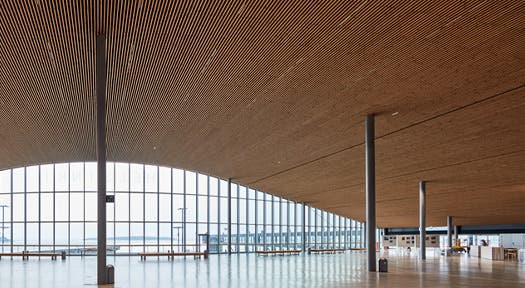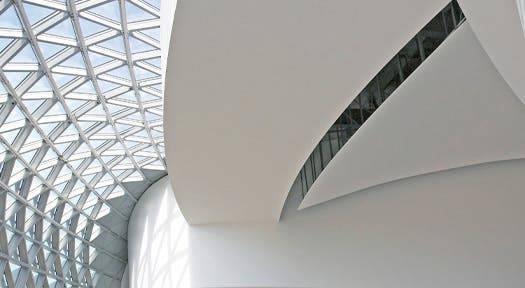Acoustical design can be one of the most complex facets of architecture and construction. Depending on the purpose of a building or room, primary acoustical requirements could include sound control between spaces, sound control within a space, or listening efficiency in meeting rooms and auditoriums. Just as technical challenges can vary widely from space to space, so, too, do the choices of materials and design details that can meet them. Thoroughly exploring these options requires time and effort. However, this investment can yield important benefits – happier tenants, higher property values, reduced turnovers and vacancies, and greater productivity – that clients will value just as highly as they do the allure of your design.
Sound is defined as a vibration in an elastic medium, that is, any material (air, water, physical object) that returns to its normal state after being deflected by an outside force such as sound vibration. The more elastic a substance, the better it can conduct sound. Lead, for instance, is very inelastic and therefore a poor sound conductor. Steel, on the other hand, is highly elastic, making it an excellent conductor of sound
Sound is transmitted in a wave motion as an elastic medium produced by a vibrating object. The vibrations move the particles of the medium (such as air) adjacent to it, back and forth, creating an alternate compression and rarefaction of the medium. These disturbances move away from the source in a wave motion, much as a ripple moves along the surface of the water when a stone is dropped in.
USG Middle East maintains a longstanding commitment with its employees, customers, and communities to reduce environmental impact by using recycled materials whenever feasible to eliminate manufacturing waste. USG Middle East products contribute toward LEED® credits in different areas. The company has a technical team that offers technical support for all healthcare projects scales at no cost whenever it is required by the clients, consultants, or contractors.
PRINCIPLES
Acoustics affect critical aspects of a building’s function, from productivity in office settings and performance quality in theaters and auditoriums, to the price an apartment, condominium, or single-family house can command. Understanding how to select a combination of building materials, system designs, and construction technologies that will provide the most appropriate sound control is key to creating a successful acoustical design.
Sound Transmissions:
- Airborne sound transmission: Sound traveling through the air and subsequently through partitions and openings.
- Impact sound transmission: Originates by contact with the structure and travels through the structure. Thus, it is governed by a completely different set of values than airborne sound.
ACOUSTICAL SOLUTIONS
While the science behind the sound is well understood, using that science to create the desired acoustical quality within a building or room is complex. No single acoustical “solution” can be universally applied to all designs. Each environment features unique parameters the architect and designer must consider when developing floor plans, selecting materials, and designing assemblies. Virtually every material—from furniture and wall and floor coverings to computer equipment—will affect the sound to some degree. However, designing wall partitions, ceiling systems and floor/ceiling assemblies for the distinct qualities of space will achieve the most effective sound control.
Sound travels not only in a straight path from its source but also bounces off partitions, bends around barriers, and squeezes through small openings, all of which can allow noise to reach surprisingly far beyond its point of origin. Designers must consider the dynamics of sound when determining how they will control noise within a building.







